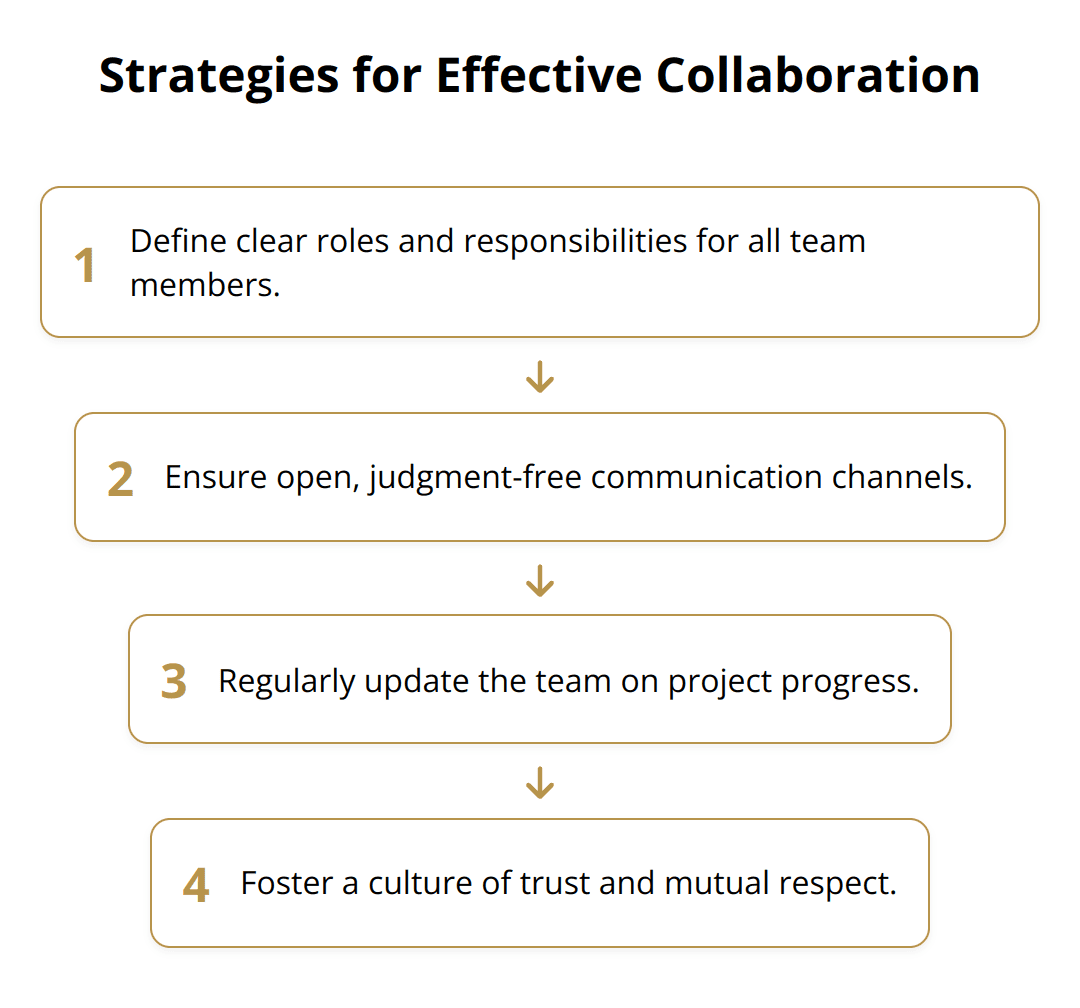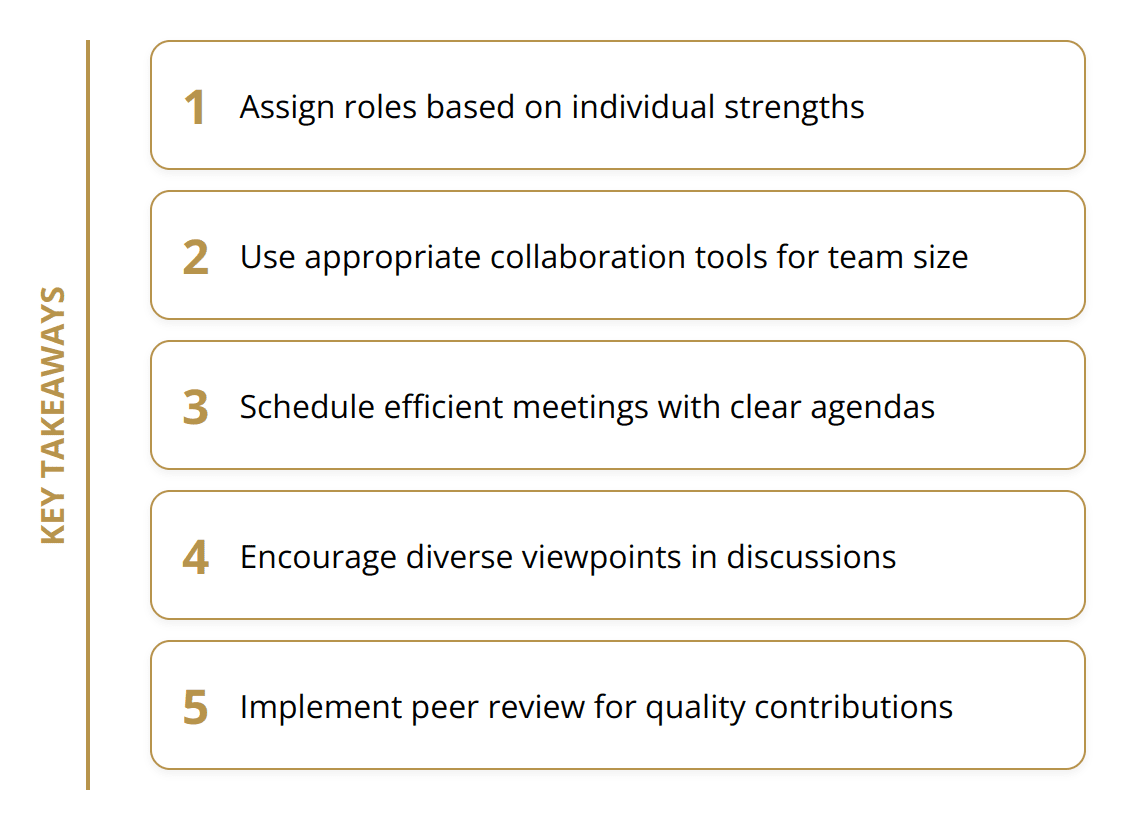by Andrea Albright

At Beverly Hills Publishing, we believe that the foundation of success in the publishing industry lies in effective collaboration. Navigating the complexities of creating and disseminating content requires a cohesive team effort.
In this blog post, we share our best practices and strategies to enhance teamwork and overcome common collaboration challenges. Join us as we explore the key elements that make collaboration not just possible, but productive and rewarding.
Crafting Effective Collaboration
A strong collaboration begins with clearly defined roles and responsibilities. It’s paramount that every team member knows what is expected of them from the start. This clarity reduces overlap, ensures tasks are completed efficiently, and significantly decreases the likelihood of project delays. Assigning specific tasks based on individual strengths and expertise not only leverages the best talent but also fosters a sense of ownership and accountability among team members.
Communication is the lifeblood of any successful collaboration. Establishing open lines of communication means creating an environment where team members feel comfortable sharing their ideas, feedback, and concerns without fear of judgment or retribution. Regular meetings, whether virtual or in-person, should be scheduled, ensuring that everyone is updated on project progress. Tools like Slack or Microsoft Teams can facilitate day-to-day conversations and quick check-ins, crucial for maintaining project momentum. Additionally, having a centralized platform for sharing documents and updates, like Google Drive or Trello, keeps everyone on the same page and greatly simplifies project management.

Underpinning effective collaboration is a culture of trust and respect. It’s about creating an environment where team members feel valued, their contributions are recognized, and mutual respect is non-negotiable. Trust is built over time, through consistent actions, reliability, and transparency. Celebrating small victories, acknowledging individual contributions, and openly discussing challenges or failures—as learning opportunities rather than points of blame—cultivate a positive team dynamic.
Actionable Tips:
- Assign clear roles and responsibilities based on individual strengths
- Utilize project management and communication tools to streamline workflow
- Schedule regular team meetings for updates and feedback
- Foster an environment where trust and respect are the foundation of all interactions

Emphasizing these aspects will not only bolster the effectiveness of collaboration but also make the publishing process more enjoyable and rewarding for everyone involved. In a field as dynamic and competitive as publishing, where the success of a project often hinges on the strength of the team behind it, implementing these strategies is not just advisable—it’s imperative.
Effective Team Collaboration Techniques
In the realm of publishing, where innovative ideas and deadlines coexist, mastering the art of team collaboration is essential. This chapter goes beyond the basics, diving into specific strategies that can elevate collaboration to new heights, ensuring a productive and positive team environment.
The selection and use of collaboration tools can significantly impact the efficiency and quality of teamwork. Platforms such as Slack and Asana not only offer real-time communication and task management but also integrate with other tools to create a seamless workflow. Choosing the right tools requires understanding the team’s needs, preferences, and the specific challenges of the project. A tool that may work well for a small, co-located team might not be the best fit for a larger, remote team. It’s not just about having the right tools, but also about using them effectively. Teams should establish guidelines on how to use these tools to avoid information overload and ensure that communications remain focused and relevant.

Regular meetings and check-ins are pivotal in maintaining the project’s momentum and ensuring every team member is aligned with the project goals. However, the key is to conduct these interactions efficiently. Agenda-setting, time limits, and clear outcomes for each meeting can prevent them from becoming time-drains. Virtual meeting tools like Zoom or Microsoft Teams have features that support interactive sessions, such as breakout rooms for smaller discussions, polls for quick decision-making, and screen sharing for presentations. Leveraging these features can make meetings more engaging and productive.
Diversity in thought and creativity is the lifeblood of innovation, especially in publishing. Teams that embrace diverse perspectives are better equipped to tackle complex problems and come up with creative solutions. Encouraging an environment where different viewpoints are not just tolerated but actively sought out and valued is a critical step towards achieving this. It requires a deliberate effort to include voices that may be quieter or come from less represented backgrounds. This might involve structuring meetings to ensure everyone has a chance to speak, using anonymous feedback tools to gather input, or dedicating time to explore ideas that at first seem unconventional.
Practical Tips:
- Choose collaboration tools that match the team’s size and project complexity
- Use meetings for decision-making, not status updates
- Embrace and encourage diversity in team discussions

Incorporating these techniques into your collaboration strategy can transform the way your team works together, leading to more successful outcomes and a more enjoyable process for everyone involved.
For more insights on teamwork and productivity, explore our thoughts on thought leadership and success stories.
Handling Collaboration Challenges
Successful collaboration in publishing hinges on more than just shared goals and tools; it demands strategies for overcoming inevitable obstacles. Addressing conflicts constructively, managing remote work effectively, and ensuring consistent contributions from all team members are vital.
Address Conflicts Constructively
Conflict is not necessarily detrimental. When handled correctly, it can lead to growth and innovation. The key is to approach disagreements with a solution-oriented mindset. Encourage open dialogue where each party has the chance to express their views without interruption. After understanding all perspectives, work collaboratively to find a compromise or solution that advances the project’s goals. Remember, the aim is not to win an argument but to resolve the issue in a way that benefits the project.

For more on fostering open dialogues, see our insights on success stories.
Manage Remote Work and Time Zones
Remote work and different time zones can add complexity to projects. However, these challenges can be mitigated with thoughtful planning and tools. Establish a core hour window where all team members are expected to be available, facilitating real-time collaboration. Use scheduling tools to plan meetings when they are most convenient for the majority, and always record sessions for those who cannot attend. Leverage asynchronous communication for updates and feedback, ensuring no one is left out of the loop due to their location.
Ensure Quality Contributions
Diverse teams bring a wealth of perspectives and talents, but ensuring consistent and high-quality contributions can be challenging. Set clear expectations from the outset regarding the quality and timeliness of work. Implement a peer review process, where team members can provide constructive feedback on each other’s contributions before final submission. This not only helps maintain high standards but also fosters a culture of continuous improvement and accountability.
Practical Tips:
- Foster a solution-oriented mindset for conflicts
- Schedule “core hours” for overlap in remote teams
- Implement a peer review process for quality control
By addressing these common challenges with clear strategies and tools, teams can enhance their collaboration efforts, leading to a more efficient and enjoyable publishing process.
Final Thoughts
Effective collaboration is more than a strategic approach; it’s a necessary component for success in the publishing world. This blog post outlined how focusing on clear roles, open communication, and an environment of trust can transform team dynamics, ensuring projects not only reach completion but do so with excellence. By embracing diverse perspectives and leveraging technology, teams can elevate their collaborative efforts, fostering innovation and productivity.

At Beverly Hills Publishing, we’ve witnessed firsthand the substantial impact effective collaboration has on a project’s success. Projects that flourish are often those where team members feel valued, ideas are freely exchanged, and challenges are met with collective resolve. It’s these projects that stand out in the competitive landscape of publishing and make a lasting impact.
The journey towards mastering collaboration doesn’t end here. It’s an ongoing process of learning and growth. As teams evolve and new challenges arise, flexibility and a commitment to continuous improvement in collaborative practices are key.
We encourage you to not only apply these insights but also to stay engaged with the latest trends and strategies in publishing. Continuous growth in our collaborative capacities can elevate our projects from good to groundbreaking. For more insights and support on your publishing journey, visit Beverly Hills Publishing.
Remember, the ultimate goal of collaboration in publishing isn’t just to complete projects but to create works that inspire, inform, and captivate. With a strong foundation in effective teamwork, the possibilities are limitless. Let’s continue to push the boundaries of what we can achieve together, fostering a culture of excellence and innovation in every story we bring to life.














































































































































































































































